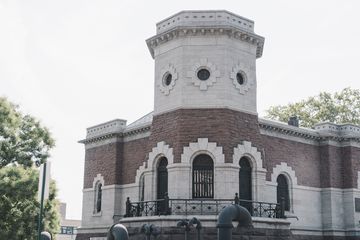There was a hole in her part of Harlem - large and obvious in its absence: the warm, bready, circular New York City bagel was missing from Naomi's neighborhood. Every morning at the end of her commute, she had no other option than to purchase her bagels from the food trucks in front of Harlem Hospital, where she worked as a hospital administrator. However, even the most amateur of bagel lovers can tell that there is a distinct difference between a food truck bagel and the round wonders of the Jewish bakery on the Lower East Side that welcomed Naomi when she first moved to New York from Texas fifty years ago, in 1969. The Jewish bakery bagels were what Naomi calls “real good bagels.” The Jewish bakery had lox. They had sandwiches, and it was there that Naomi was educated in bagel appreciation.
Since moving to Harlem in 1970, her appreciation has grown, but her access to the good stuff sharply declined. The bagels in Naomi’s new neighborhood were cold like the cream cheese, which was slapped in slabs across the hard and solid surface of the bagel bread. In the food trucks, there were no lox, no sandwiches, no changing flavors of cheese, just plain, unappetizing cream. Each morning, before beginning her shift at work, Naomi was faced with the unsatisfying choice of either warming up her Harlem bagel in a microwave or scraping off the cold cream cheese. “That’s no way to eat a real good bagel,” Naomi complained. “A real good bagel is a bagel that’s toasted and served with a good cream cheese or a side order of meat or eggs. That’s what we needed [in Harlem].”
In 2012, when Naomi retired from her hospital job, she spent a year traveling, and when she returned home to Harlem, she sat down with her family, and they decided that, together, they would fill Harlem’s bagel hole. In February 2015, Acts III Bagels served its first real good bagel. According to Naomi, for nearly two years, aside from Acts III, there was no other real good bagel shop in the coldly undercooked and underserved Harlem community. As of 2019, the neighborhood is now shared between two shops. Bo’s Bagels, on 116th Street, which serves the lower half of Central Harlem and Acts III, almost twenty blocks away on 135th Street, the upper.
Acts III may very well also be one of the only biblical bagel shops in the world. Naomi, who is a self-identified Bible-reader, chose the name Acts III because, she said, “I believe in the miracles of Acts III… The people were healed, and I see bagels as a way of healing this community in terms of what they didn’t have… We are contributing to Acts III, the healing of the people, because we are bringing something to them that gives them a space for communal activity.”
Keeping a sense of community is especially important in Harlem as gentrification revises the recipe of the neighborhood. In response to the community’s changes, Naomi attempts to keep her prices low to ensure that her bagels may be eaten by Harlemites both old and new. “[I’m] trying to accommodate those of us who’ve been here for a little while,” Naomi explained. “Those senior citizens, the people who have menial jobs or who are working from salary to salary.”
Naomi believes that gentrification will bring even more real good bagel shops to Harlem. In fact, she posits that the lack of gentrification in the past may have been largely responsible for the bland, bagel-less-ness of Harlem just a few years ago. As the neighborhood becomes more diverse, its dining options will as well, and so Naomi expects to see many more coffee shops and bagel shops continue to emerge in the coming years.
For health reasons, Naomi has had to quit her daily bagel habit, however, she does nearly everything she can to sustain her store - the shopping, the salads, the chilis, the ordering, the serving, the decorating, almost all of it is done by Naomi, who works every day except Sunday when she walks from her home across 138th Street to St. Marks A.M.E. church, where she can be with The Bible apart from her bagels.
Slowly though, Naomi is giving up control of the shop to her family. “It’s time for you to relax. It’s time for you to give up,” they urge her, but she is reluctant to leave her bagels behind. When Naomi eventually does go, her name will stay. Her relatives want to change the shop from Acts III to Naomi’s. Naomi is laidback, quiet. She feels no need for recognition. She would rather the name of the shop remain the way it is. “You know, I could have named it anything,” she reflects. “[Acts III] was just the name that came to mind, and I think that it was supposed to be.”
Besides, she points out, mixing spiritual nourishment with physical nourishment as she has done by calling the store Acts III may seem unusual to some, but it is, in fact, a very old idea. In The Bible, there is manna, food given by God to the Israelites, and in Harlem, there are bagels.
